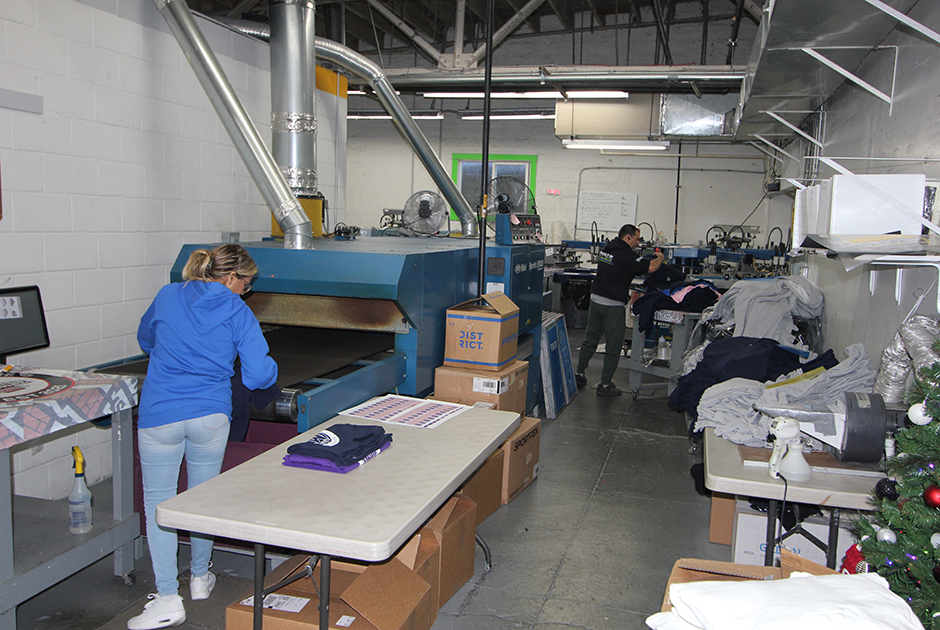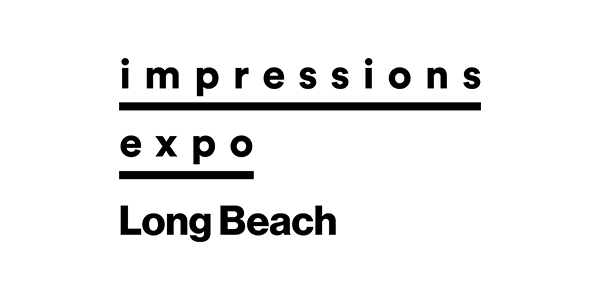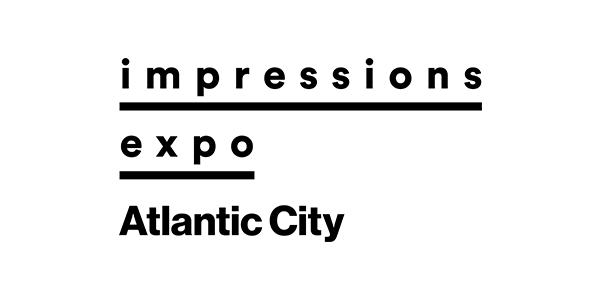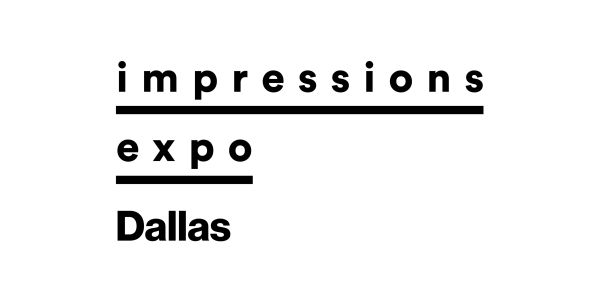There is no greater goal that any shop can have than to be efficient. When you are “efficient,” you are squeezing the most out of every minute, maximizing income. You are not wasting anything. You are optimizing your resources to the highest degree possible.

Make sure the work you’re doing is the kind of work that will earn you the most profit.
Unfortunately, as pretty much any veteran decorator will tell you, becoming efficient in one’s operations is easier said than done. When assessing your own shop, it can be hard to see the forest for the trees. Management and staff become complacent as they continue “doing things the way they have always been done” and may need an outsider to point out a better way.
“When you are trying to fix a problem inside your facility, and you have eyes from only the inside, it’s difficult to know where you are not efficient,” says veteran decorator Charlie Taublieb, of Taublieb Consulting. “I have a client right now who knows he needs help, because he doesn’t know what it will take to become efficient.”
Mark Coudray, another long-time decorator, and principal of Coudray Growth Technologies, agrees. He emphasizes, though, that it can still be done through a combination of forethought and paying attention to the basics. “If you want to define what efficiency is, it comes down to the value per hour of work,” he suggests as an overall definition of what it is operators should be looking for.
Same thing with pricing strategies. “If you are not generating a sufficient amount of revenue per hour, then there’s no point,” he says.
Along these same lines Marshall Atkinson, of Atkinson Consulting, says, “I always start by asking some key questions. Do we have the right people? Are we doing the right things? We don’t want to be great at printing the wrong side of the shirt. We don’t want to be efficiently making mistakes. We can always make another dollar, but we can’t make another minute.”
Other questions Coudray suggests shop managers ask themselves include things like: How many people do you have? What’s your turnover or revenue? What’s the margin divided by the number of employees? “This reveals a lot about whether you’ve got too many administrative, art or production people. A huge part of the efficiency equation is having the right production capacity in relation to your resources,” he says.
Finding Balance
Of course, achieving efficiency is not only about time and money. Quality of life should also be taken into consideration. “One of the causes of ‘The Great Resignation,’ where people voluntarily resigned from their jobs in 2021 en masse in the wake of COVID-19, was labor issues,” Coudray says.
“People had a chance to reconnect with loved ones while working remotely,” he adds. “Once they got off the hamster wheel, they did not want to get back on. How this translates to the decorated apparel industry is you can never have enough labor to do all those little tasks the way they are currently being done.”
In terms of the current environment, Coudray says: “What I am seeing now with business owners is they are less concerned with profitability and more concerned with quality of life. They want their companies to be a great place to work, to have a great culture. Of course, they want to make a profit, but this is becoming secondary to all the other elements.”
Fortunately, while these two goals—efficiency and job satisfaction—may at first blush seem worlds apart, they are not only compatible, but in many ways two sides to the same coin.
“If you understand what being efficient is, it has a tremendous number of secondary benefits,” Coudray says. “When you have more time to think, you have more time to refine what you’re doing. You make better decisions. You choose different kinds of work instead of just taking anything to pay the bills.”
“Take a look at the orders coming in,” says Atkinson. “If you want to be more efficient, why are you working on jobs that are not profitable or hard to do? If you remove those, imagine how much time you’ll have for more profitable work?”
One way to assess the profitability of your work, Atkinson says, is to value each piece of equipment. “Are you making $300, $500 or even $1,000 per hour? Total up all the jobs you produce on one machine for a month. Then figure out the employee hours for the entire crew on that machine.”
By way of an example, Atkinson says, “Let’s say your machine printed 60 jobs totaling $51,243.82 worth of sales and employee time was 153.27 hours. What you end up with is $51,243.82 divided by 153.27 hours, equaling $334.34 per hour. Imagine if you could find clients who better valued your services and creativity and were willing to pay enough to earn $500 an hour? 153.27 hours x $500 per hour = $76,635.00. The result is $25,391.18 more for the same amount of work.
Ultimately, Atkinson says, “The place to start is to prioritize what kind of work you want to do. This goes back to a topic I am always talking about which is business plans. You should know your target customer. It’s the one who pays you double what everyone else does you want to be working with.”
The Observation Process
Again, whether you are evaluating yourself or hiring a consultant, both are going to start with the simple act of watching what’s going on.
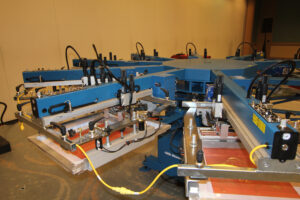
An idle piece of a equipment is a piece of equipment that’s not making you money.
“I like to be a bug on the wall,” says Coudray. “You are literally just watching the flow.”
“I try not to disturb anyone,” Taublieb agrees. “Just observe.”
Says Atkinson: “I was in a shop where they had a woman using a specialty machine to print neck tags. She printed the inside neck area, it air dried immediately, and she threw it into a box. Then three other women would pull shirts out of the box, fold them and organize by size.
“I asked the owner why they were doing that, and he replied they had been doing it that way for years. This woman was so fast no one could keep up with her. I said, ‘Let’s test that.’
“I moved a cart over to the printer and grabbed an employee and instructed that person to take each shirt as the neck was printed, fold it and put it in stacks by size. The person had no problem keeping up with the printer. That freed up the two extra people who had been grabbing shirts out of the box. The owner said, ‘You just paid for your trip.’”
According to Taublieb, whose specialty is the production side of things, “When I go into a shop, I walk through just the way a job does. I start with the art department, then the screen room and then the production area. After I have seen what they are doing and taken some notes, I ask my questions. For me, the No. 1 issue is get the job on, get the job off, get the next job on. If the press isn’t moving, you’re not making money. My job is to identify what things employees are doing that is not making money.”
A great way to ensure this happens, he says, is by following the simple rule of always having the next job ready to go on press. “Once the current run is finished, everything for the next job should be waiting to be put on the press, including screens, ink, squeegees, and garments. Not having the next job ready probably wastes 15 to 30 minutes,” he explains.
Another common time waster, Taublieb says, is not having extra garments on hand. When a misprint occurs, no one gets a replacement until the job is finished. Then the press sits idle until that new piece arrives. Similarly, shops can save as much as 30 minutes by setting up the first job for the next day before they leave instead of waiting until the morning.
Another good exercise for those looking to wring out production inefficiencies, Coudray says, is to make a diagram of the layout of the production floor and pick someone, like a production manager, and watch them. With a pencil on a clipboard, draw the path of how that person moves over the course of 20-30 minutes. “It can be staggering how many miles an employee might walk trying to find a wrench, the right squeegee or a flood bar,” Coudray says.
“In my experience—and this happens with virtually everyone I’ve ever worked with—the process starts in a state of chaos. Everything is out of control. I can’t tell you how many shops have a loader and unloader and nobody catching. They’ll have one person loading and unloading. They’ll have another person making screens and another reclaiming and another mixing ink. Meanwhile, shirts are dropping off the belt into a box. When the run is over, somebody’s got to pull all those shirts out.”
From there, he says, somebody’s got to make sure there’s no spoils, and hopefully this is known before they break down the press. “It’s a nightmare,” he explains. “To become efficient, you must stop reacting to the biggest fire at the moment. It might be the angry client, a missing delivery or a press breakdown.”
Eventually,” he says. “Someone will say ‘We’ve got to do something because we can’t go on like this. Then a sorting out process ensues. What’s important is sorted from what’s distracting and unproductive. And an amazing transformation begins to take place that I call clarity. And finally, you reach the control stage where individual friction points slowing down the flow are corrected.”
Deborah Sexton is a former editor of Impressions Magazine, and now owns her own company, Saracen Communications, doing digital media marketing, copywriting, and public relations for companies in the decorated apparel industry. You can reach her at [email protected].

